Antibiotic therapy for pelvic inflammatory disease
- PMID: 32820536
- PMCID: PMC8094882
- DOI: 10.1002/14651858.CD010285.pub3
Antibiotic therapy for pelvic inflammatory disease
Abstract
Background: Pelvic inflammatory disease (PID) affects 4% to 12% of women of reproductive age. The main intervention for acute PID is broad-spectrum antibiotics administered intravenously, intramuscularly or orally. We assessed the optimal treatment regimen for PID. OBJECTIVES: To assess the effectiveness and safety of antibiotic regimens to treat PID.
Search methods: In January 2020, we searched the Cochrane Sexually Transmitted Infections Review Group's Specialized Register, which included randomized controlled trials (RCTs) from 1944 to 2020, located through hand and electronic searching; CENTRAL; MEDLINE; Embase; four other databases; and abstracts in selected publications.
Selection criteria: We included RCTs comparing antibiotics with placebo or other antibiotics for the treatment of PID in women of reproductive age, either as inpatient or outpatient treatment. We limited our review to a comparison of drugs in current use that are recommended by the 2015 US Centers for Disease Control and Prevention guidelines for treatment of PID.
Data collection and analysis: We used standard methodological procedures expected by Cochrane. Two authors independently extracted data, assessed risk of bias and conducted GRADE assessments of the quality of evidence.
Main results: We included 39 RCTs (6894 women) in this review, adding two new RCTs at this update. The quality of the evidence ranged from very low to high, the main limitations being serious risk of bias (due to poor reporting of study methods and lack of blinding), serious inconsistency, and serious imprecision. None of the studies reported quinolones and cephalosporins, or the outcomes laparoscopic evidence of resolution of PID based on physician opinion or fertility outcomes. Length of stay results were insufficiently reported for analysis. Regimens containing azithromycin versus regimens containing doxycycline We are uncertain whether there was a clinically relevant difference between azithromycin and doxycycline in rates of cure for mild-moderate PID (RR 1.18, 95% CI 0.89 to 1.55; 2 RCTs, 243 women; I2 = 72%; very low-quality evidence). The analyses may result in little or no difference between azithromycin and doxycycline in rates of severe PID (RR 1.00, 95% CI 0.96 to 1.05; 1 RCT, 309 women; low-quality evidence), or adverse effects leading to discontinuation of treatment (RR 0.71, 95% CI 0.38 to 1.34; 3 RCTs, 552 women; I2 = 0%; low-quality evidence). In a sensitivity analysis limited to a single study at low risk of bias, azithromycin probably improves the rates of cure in mild-moderate PID (RR 1.35, 95% CI 1.10 to 1.67; 133 women; moderate-quality evidence), compared to doxycycline. Regimens containing quinolone versus regimens containing cephalosporin The analysis shows there may be little or no clinically relevant difference between quinolones and cephalosporins in rates of cure for mild-moderate PID (RR 1.05, 95% CI 0.98 to 1.14; 4 RCTs, 772 women; I2 = 15%; low-quality evidence), or severe PID (RR 1.06, 95% CI 0.91 to 1.23; 2 RCTs, 313 women; I2 = 7%; low-quality evidence). We are uncertain whether there was a difference between quinolones and cephalosporins in adverse effects leading to discontinuation of treatment (RR 2.24, 95% CI 0.52 to 9.72; 6 RCTs, 1085 women; I2 = 0%; very low-quality evidence). Regimens with nitroimidazole versus regimens without nitroimidazole There was probably little or no difference between regimens with or without nitroimidazoles (metronidazole) in rates of cure for mild-moderate PID (RR 1.02, 95% CI 0.95 to 1.09; 6 RCTs, 2660 women; I2 = 50%; moderate-quality evidence), or severe PID (RR 0.96, 95% CI 0.92 to 1.01; 11 RCTs, 1383 women; I2 = 0%; moderate-quality evidence). The evidence suggests that there was little to no difference in in adverse effects leading to discontinuation of treatment (RR 1.05, 95% CI 0.69 to 1.61; 17 studies, 4021 women; I2 = 0%; low-quality evidence). . In a sensitivity analysis limited to studies at low risk of bias, there was little or no difference for rates of cure in mild-moderate PID (RR 1.05, 95% CI 1.00 to 1.12; 3 RCTs, 1434 women; I2 = 0%; high-quality evidence). Regimens containing clindamycin plus aminoglycoside versus quinolone We are uncertain whether quinolone have little to no effect in rates of cure for mild-moderate PID compared to clindamycin plus aminoglycoside (RR 0.88, 95% CI 0.69 to 1.13; 1 RCT, 25 women; very low-quality evidence). The analysis may result in little or no difference between quinolone vs. clindamycin plus aminoglycoside in severe PID (RR 1.02, 95% CI 0.87 to 1.19; 2 studies, 151 women; I2 = 0%; low-quality evidence). We are uncertain whether quinolone reduces adverse effects leading to discontinuation of treatment (RR 0.21, 95% CI 0.02 to 1.72; 3 RCTs, 163 women; I2 = 0%; very low-quality evidence). Regimens containing clindamycin plus aminoglycoside versus regimens containing cephalosporin We are uncertain whether clindamycin plus aminoglycoside improves the rates of cure for mild-moderate PID compared to cephalosporin (RR 1.02, 95% CI 0.95 to 1.09; 2 RCTs, 150 women; I2 = 0%; low-quality evidence). There was probably little or no difference in rates of cure in severe PID with clindamycin plus aminoglycoside compared to cephalosporin (RR 1.00, 95% CI 0.95 to 1.06; 10 RCTs, 959 women; I2= 21%; moderate-quality evidence). We are uncertain whether clindamycin plus aminoglycoside reduces adverse effects leading to discontinuation of treatment compared to cephalosporin (RR 0.78, 95% CI 0.18 to 3.42; 10 RCTs, 1172 women; I2 = 0%; very low-quality evidence).
Authors' conclusions: We are uncertain whether one treatment was safer or more effective than any other for the cure of mild-moderate or severe PID Based on a single study at a low risk of bias, a macrolide (azithromycin) probably improves the rates of cure of mild-moderate PID, compared to tetracycline (doxycycline).
Trial registration: ClinicalTrials.gov NCT01799356.
Copyright © 2020 The Cochrane Collaboration. Published by John Wiley & Sons, Ltd.
Conflict of interest statement
RFS, DGF, JM and RVD certify that they do not have any affiliations with, or involvement in, any organization or entity with a direct financial interest in the subject matter of this review (e.g. employment, consultancy, stock ownership, honoraria, expert testimony). JR has received consultancy payments from Mycovia and GlaxoSmithKline and conference support from Janssen and American Society for Microbiology, has research grants pending from Gilead, Viiv and Pfizer, and owns stock options in AstraZeneca and GlaxoSmithKline.
They disclose that two of the authors (RFS and JR) had two publications used in the analysis. RFS and JR did not participate in the process for considering these studies for inclusion, data extraction, and grading for risk of bias.
Figures


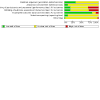
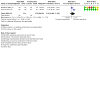
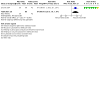

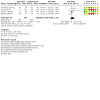
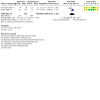
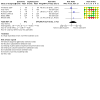
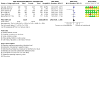
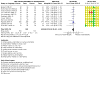

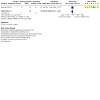
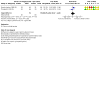
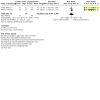
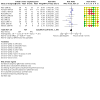
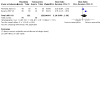
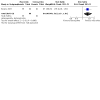
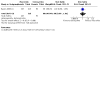
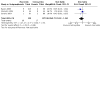
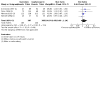
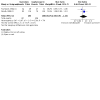
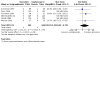
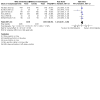
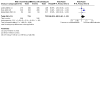
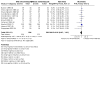
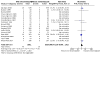
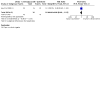

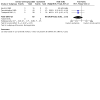
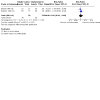
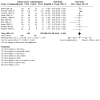
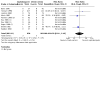
Update of
-
Antibiotic therapy for pelvic inflammatory disease.Cochrane Database Syst Rev. 2017 Apr 24;4(4):CD010285. doi: 10.1002/14651858.CD010285.pub2. Cochrane Database Syst Rev. 2017. Update in: Cochrane Database Syst Rev. 2020 Aug 20;8:CD010285. doi: 10.1002/14651858.CD010285.pub3. PMID: 28436019 Free PMC article. Updated.
References
References to studies included in this review
Apuzzio 1989 {published data only}
-
- Apuzzio JJ, Stankiewicz R, Ganesh V, Jain S, Kaminski Z, Louria D. Comparison of parenteral ciprofloxacin with clindamycin-gentamicin in the treatment of pelvic infection. American Journal of Medicine 1989;87(5A):148S-51S. - PubMed
Arredondo 1997 {published data only}
-
- Arredondo JL, Diaz V, Gaitan H, Maradiegue E, Oyarzún E, Paz R, et al. Oral clindamycin and ciprofloxacin versus intramuscular ceftriaxone and oral doxycycline in the treatment of mild-to-moderate pelvic inflammatory disease in outpatients. Clinical Infectious Diseases 1997;24(2):170-8. - PubMed
Aşicioğlu 2013 {published data only (unpublished sought but not used)}
-
- Aşicioğlu O, Gungorduk K, Ozdemir A, Ertas IE, Yildirim G, Sanci M, et al. Single daily dose of moxifloxacin versus ofloxacin plus metronidazole as a new treatment approach to uncomplicated pelvic inflammatory disease: a multicentre prospective randomized trial. European Journal of Obstetrics, Gynecology, and Reproductive Biology 2013;171(1):116-21. - PubMed
Balbi 1996 {published data only}
-
- Balbi G, Piscitelli V, Di Grazia F, Martini S, Balbi C, Cardone A. Acute pelvic inflammatory disease: comparison of therapeutic protocols [Malattia infiammatoria pelvica acuta: protocolli terapeutici a confronto]. Minerva Ginecologica 1996;48(1-2):19-23. - PubMed
Bevan 2003 {published data only}
-
- Bevan CD, Ridgway GL, Rothermel CD. Efficacy and safety of azithromycin as monotherapy or combined with metronidazole compared with two standard multidrug regimens for the treatment of acute pelvic inflammatory disease. Journal of International Medical Research 2003;31(1):45-54. - PubMed
Buisson 1989 {published data only}
-
- Buisson P, Mulard C, Baudet J, Bernard P, Mares P, Montero M, et al. Treatment of upper genital infections in women. Multicenter study of the comparative efficacy and tolerance of an amoxicillin-clavulanic acid combination and of a triple antibiotic combination [Étude multicentrique de l'efficacité et de la tolérance comparées de l'association amoxicilline-acide clavulanique et d'une triple association antibiotique]. Revue Francaise de Gynecologie et d'Obstetrique 1989;84(10):699-703. - PubMed
Burchell 1987 {published data only}
-
- Burchell HJ, Cronje HS, De Wet JI. Efficacy of different antibiotics in the treatment of pelvic inflammatory disease. South African Medical Journal 1987;72:248-9. - PubMed
Ciraru‐Vigneron 1986 {published data only}
-
- Ciraru-Vigneron N, Bercau G, Sauvanet E, Nguyen Tan Lung R, Felten A, Leaute JB, et al. The drug combination amoxicillin-clavulanic acid compared to the triple combination ampicillin-gentamicin-metronidazole in the treatment of severe adnexal infections [L'association amoxicilline-acide clavulanique comparée à la triple association ampicilline-gentamicine-métronidazole dans le traitement des infections utéro-annexielles sévères]. Pathologie Biologie 1986;34(5 Pt 2):665-8. - PubMed
Ciraru‐Vigneron 1989 {published data only}
-
- Ciraru-Vigneron N, Barrier J, Becue J, Chartier M, Giraud JR, Landes P, et al. Amoxycillin/clavulanic acid ('Augmentin') compared with a combination of aminopenicillin, aminoglycoside and metronidazole in the treatment of pelvic inflammatory disease. Pharmatherapeutica 1989;5(5):312-9. - PubMed
Crombleholme 1986 {published data only}
-
- Crombleholme D, Landers D, Ohm-Smith M, Robbie MO, Hadley WK, DeKay V, et al. Sulbactam/ampicillin versus metronidazole/gentamicin in the treatment of severe pelvic infections. Drugs 1986;31(Suppl 2):11-3. - PubMed
Crombleholme 1987 {published data only}
-
- Crombleholme WR, Ohm-Smith M, Robbie MO, DeKay V, Sweet RL. Ampicillin/sulbactam versus metronidazole-gentamicin in the treatment of soft tissue pelvic infections. American Journal of Obstetrics and Gynecology 1987;156(2):507-12. - PubMed
Crombleholme 1989 {published data only}
-
- Crombleholme WR, Schachter J, Ohm-Smith M, Luft J, Whidden R, Sweet RL. Efficacy of single-agent therapy for the treatment of acute pelvic inflammatory disease with ciprofloxacin. American Journal of Medicine 1989;87(Suppl 5A):142S-7S. - PubMed
Dean 2016 {published and unpublished data}ISRCTN51790058
Fischbach 1994 {published data only}
-
- Fischbach F, Deckardt R, Graeff H. Ciprofloxacin/metronidazol vs. cefoxitin/doxycyclin: vergleich zweier therapieschemata zur behandlung der akuten pelvinen infektion. Geburtshilfe und Frauenheilkunde 1994;54:337-40. - PubMed
Giraud 1989 {published data only}
-
- Giraud JR, Chartier M, Ciraru Vigneron N, Becue J, Landes P, Leng JJ, et al. A comparison of the efficacy of and tolerance to Augmentin used alone and as one of three drugs used to treat acute upper genital tract infections. Results of a multicentre trial 152 cases [Comparaison de l'efficacite et de la tolerance de l'Augmentine en monotherapie versus triple association dans le traitment des infections genitales hautes aigues. Resultats d'une etude multicentrique portant sur 152 cas]. Contraception, Fertilite, Sexualite 1989;17(10):941-8.
Heinonen 1989 {published data only}
-
- Heinonen PK, Teisala K, Miettinen A, Aine R, Punnonen R, Grönroos P. A comparison of ciprofloxacin with doxycycline plus metronidazole in the treatment of acute pelvic inflammatory disease. Scandinavian Journal of Infectious Diseases. Supplementum 1989;60:66-73. - PubMed
Hemsell 1994 {published data only}
-
- Hemsell DL, Little BB, Faro S, Sweet RL, Ledger WJ, Berkeley AS, et al. Comparison of three regimens recommended by the Centers for Disease Control and Prevention for the treatment of women hospitalized with acute pelvic inflammatory disease. Clinical Infectious Diseases 1994;19(4):720-7. - PubMed
Heystek 2009 {published data only}
-
- Heystek M, Ross JD, PID Study Group. A randomized double-blind comparison of moxifloxacin and doxycycline/metronidazole/ciprofloxacin in the treatment of acute, uncomplicated pelvic inflammatory disease. International Journal of STD & AIDS 2009;20(10):690-5. - PubMed
Hoyme 1993 {published data only}
-
- Hoyme UB, Ansorg R, Recklinghausen G, Schindler AE. Quinolones in the treatment of uncomplicated salpingitis: ofloxacin/metronidazole vs gentamicin/clindamycin [Chinolone in der therapie der unkoplizierten salpingitis: ofloxacin/metronidazol vs gentamicin/clindamicin]. Infektionen in der Gynäcologie und geburtshilfe 1993;VII.8a:607-8.
Judlin 2010b {published data only}
-
- Judlin P, Liao Q, Liu Z, Reimnitz P, Hampel B, Arvis P. Efficacy and safety of moxifloxacin in uncomplicated pelvic inflammatory disease: the MONALISA study. BJOG 2010;117:1475-84. - PubMed
Landers 1991 {published data only}
-
- Landers DV, Wolner-Hanssen P, Paavonen J, Thorpe E, Kiviat N, Ohm-Smith M, et al. Combination antimicrobial therapy in the treatment of acute pelvic inflammatory disease. American Journal of Obstetrics and Gynecology 1991;164(3):849-58. - PubMed
Leboeuf 1987 {published data only}
-
- Leboeuf D, Rousset D, Cacault JA, Engelman P. Prospective randomized trial comparing the efficacy and the tolerance of clindamycin-gentamicin versus metronidazole-gentamicin in acute utero-adnexal infections in hospitalized patients [Essai prospectif randomise comparant l'efficacite et la tolerance de la clindamycine-gentamycine versus metronidazole-gentamycine dans les infections utero-annexielles aigues chez des patientes hospitalisees]. Revue Francaise de Gynecologie et d'Obstetrique 1987;82(1):9-15. - PubMed
Malhotra 2003 {published data only}
-
- Malhotra M, Sharma JB, Batra S, Arora R, Sharma S. Ciprofloxacin-tinidazole combination, fluconazole-azithromycin-secnidazole-kit and doxycycline-metronidazole combination therapy in syndromic management of pelvic inflammatory disease: a prospective randomized controlled trial. Indian Journal of Medical Sciences 2003;57(12):549-55. - PubMed
Maria 1992 {published data only}
-
- Maria B, Dublanchet A, Strecker J, Dennemark N, Genazzani A, Fioretti P, et al. Comparative evaluation of clindamycin/gentamicin and cefoxitin/doxycycline for treatment of pelvic inflammatory disease: a multi-center trial. Acta Obstetricia et Gynecologica Scandinavica 1992;71(2):129-34. - PubMed
Martens 1990 {published data only}
-
- Martens MG, Faro S, Hammill H, Maccato M, Riddle GD, LaPread E. Comparison of cefotaxime, cefoxitin and clindamycin plus gentamicin in the treatment of uncomplicated and complicated pelvic inflammatory disease. Journal of Antimicrobial Chemotherapy 1990;26(Suppl A):37-43. - PubMed
Martens 1993 {published data only}
-
- Martens MG, Gordon S, Yarborough DR, Faro S, Binder D, Berkeley A, Ambulatory PID Research Group. Multicenter randomized trial of ofloxacin versus cefoxitin and doxycycline in outpatient treatment of pelvic inflammatory disease. Southern Medical Journal 1993;86(6):604-10. - PubMed
Okada 1988 {published data only}
-
- Okada H, Yamamoto T, Yasuda J, Kanao M, Shimizu T, Yorozu Y, et al. Comparative clinical study on ciprofloxacin and cefroxadine in the treatment of infections in obstetrics and gynecology [in Japanese]. Chemotherapy 1988;36(11):821-57.
Ross 2006 {published data only}
-
- Ross JD, Cronjé HS, Paszkowski T, Rakoczi I, Vildaite D, Kureishi A, et al, MAIDEN Study Group. Moxifloxacin versus ofloxacin plus metronidazole in uncomplicated pelvic inflammatory disease: results of a multicentre, double blind, randomised trial. Sexually Transmitted Infections 2006;82(6):446-51. - PMC - PubMed
Roy 1985 {published data only}
-
- Roy S, Wilkins J. Cefotaxime in the treatment of female pelvic soft tissue infections. Infection 1985;13(Suppl 1):S56-61. - PubMed
Roy 1990 {published data only}
-
- Roy S, Wilkins J, March CM, Solera NC, Galvan NI, Ressler RL, et al. A comparison of the efficacy and safety of ceftizoxime with doxycycline versus conventional CDC therapies in the treatment of upper genital tract infection with or without a mass. Clinical Therapeutics 1990;12(Suppl C):53-73. - PubMed
Savaris 2007 {published data only}46117662
-
- Savaris RF, Teixeira LM, Torre TG, Edelweiss MIA, Moncada J, Schachter J. Comparing ceftriaxone plus azithromycin or doxycycline for pelvic inflammatory disease: a randomized controlled trial. Obstetrics and Gynecology 2007;110(1):53-60. - PubMed
Sirayapiwat 2002 {published data only}
-
- Sirayapiwat P, Chaithongwongwatthana S, Tirawatnapong S. Triple therapies versus clindamycin plus gentamicin in the treatment of acute pelvic inflammatory disease: a randomized controlled trial. Thai Journal of Obstetrics and Gynaecology 2002;14:215-21.
Soper 1988 {published data only}
-
- Soper DE, Despres B. A comparison of two antibiotic regiments for treatment of pelvic inflammatory disease. Obstetrics and Gynecology 1988;72(7):7-12. - PubMed
Sweet 1985 {published data only}
-
- Sweet RL, Ohm-Smith M, Landers DV, Robbie MO. Moxalactam versus clindamycin plus tobramycin in the treatment of obstetric and gynecologic infections. American Journal of Obstetrics and Gynecology 1985;152:808-17. - PubMed
Thadepalli 1991 {published data only}
-
- Thadepalli H, Mathai D, Scottie R, Bansal MB, Savage E. Ciprofloxacin monotherapy for acute pelvic infections: a comparison with clindamycin plus gentamicin. Obstetrics and Gynaecology 1991;78(4):696-701. - PubMed
Tison 1988 {published data only}
-
- Tison E, Marpeau L, Pigné A, Tessier F, Barrat J. Treatment of acute non-chlamydial salpingitis. Study of the efficacy and tolerance of a single-therapy antibiotic: Augmentin [Traitement des salpingites aiguës non chlamydiennes. Etude de l'efficacité et de la tolérance d'un antibiotique en monothérapie: l'Augmentin]. Journal de Gynecologie, Obstetrique et Biologie de la Reproduction 1988;17(4):513-9. - PubMed
Walters 1990 {published data only}
-
- Walters MD, Gibbs RS. A randomized comparison of gentamicin-clindamycin and cefoxitin-doxycycline in the treatment of acute pelvic inflammatory disease. Obstetrics and Gynecology 1990;75(5):867-72. - PubMed
Wendel 1991 {published data only}
-
- Wendel GD Jr, Cox SM, Bawdon RE, Theriot SK, Heard MC, Nobles BJ. A randomized trial of ofloxacin versus cefoxitin and doxycycline in the outpatient treatment of acute salpingitis. American Journal of Obstetrics and Gynecology 1991;164(5 Pt 2):1390-6. - PubMed
Wiesenfeld 2017 {unpublished data only}
-
- Wiesenfeld H, Hillier S, Meyn L, Rabe L, Macio I, Priest C, et al. Impact of metronidazole on clearance of anaerobes in women with acute pelvic inflammatory disease: the ACE trial. American Journal of Obstetrics and Gynecology 2017;217(6):714. [DOI: ]
References to studies excluded from this review
Acar 1989 {published data only}
-
- Acar B, Zissis NP. Piperacillin alone vs triple antibiotic combination in gynecological infections. Journal of Chemotherapy 1989;1(6):403-6. - PubMed
Andersson 1980 {published data only}
-
- Andersson PO, Hackl H, Jensen P, Larsen KR. A comparison of two different dosages of pivampicillin and doxycycline in patients with gynaecological infections. Current Medical Research and Opinion 1980;6(8):513-7. - PubMed
Baery 2018 {published data only}
-
- Baery N, Ghasemi Nejad A, Amin M, Mahroozade S, Mokaberinejad R, Bioos S, et al. Effect of vaginal suppository on bacterial vaginitis based on Persian medicine (Iranian traditional medicine): a randomised double blind clinical study. Journal of Obstetrics and Gynaecology 2018;38(8):1110-4. [DOI: 10.1080/01443615.2018.1445706] [PMID: ] - DOI - PubMed
Bartlett 1982 {published data only}
-
- Bartlett JG. Therapeutic trial of moxalactam in intra-abdominal sepsis and gynaecological infections. Drugs under Experimental and Clinical Research 1982;VIII(5):483-6.
Berkeley 1986 {published data only}
-
- Berkeley AS, Freedman KS, Hirsch JC, Ledger WJ. Randomized, comparative trial of imipenem/cilastatin and moxalactam in the treatment of serious obstetric and gynecologic infections. Surgery, Gynecology & Obstetrics 1986;162(3):204-8. - PubMed
Blanco 1983 {published data only}
Brihmer 1988 {published data only}
-
- Brihmer C, Brundin J. Second look laparoscopy after treatment of acute salpingitis with doxycycline/benzylpenicillin procaine or trimethoprim-sulfamethoxazole. Scandinavian Journal of Infectious Diseases 1988;53:63-9. - PubMed
Brihmer 1989 {published data only}
-
- Brihmer C, Kallings I, Nord CE, Brundin J. Second look laparoscopy; evaluation of two different antibiotic regimens after treatment of acute salpingitis. European Journal of Obstetrics & Gynecology 1989;30(3):263-74. - PubMed
Brittain 2016 {published data only}
Bruhat 1986 {published data only}
-
- Bruhat MA, Pouly JL, Le Boedec G, Mage G. Treatment of acute salpingitis with sulbactam/ampicillin. Drugs 1986;31 Suppl(2):7-10. - PubMed
Bruhat 1989 {published data only}
-
- Bruhat MA, Le Bouedec G, Pouly JL, Mage G, Canis M. Treatment of acute salpingitis with sulbactam/ampicillin. International Journal of Gynecology & Obstetrics 1989;31 Suppl(2):41-6. - PubMed
Bruno 1985 {published data only}
-
- Bruno V, Lombardo M, Schimberni M, Torregrossa G, Pepe C, Carenza L. A clinical trial with the new antibiotic combination piperacillin/flucloxacillin used on gynaecological postoperative infections. Current Therapeutic Research 1985;38(3):465-73.
Cao 2017 {published data only}
-
- Cao C, Luo A, Wu P, Weng D, Zheng H, Wang S. Efficacy and safety of morinidazole in pelvic inflammatory disease: results of a multicenter, double-blind, randomized trial. European Journal of Clinical Microbiology & Infectious Diseases 2017;36:1225-30. [DOI: 10.1007/s10096-017-2913-z] [PMID: ] - DOI - PubMed
Carty 1973 {published data only}
-
- Carty MJ. The use of oxyphenbutazone ('Tanderil') in acute pelvic inflammatory disease. Current Medical Research and Opinion 1973;1(4):203-4. - PubMed
Chatwani 1997 {published data only}
Confino 1988 {published data only}
-
- Confino E, Friberg J, Vermesh M, Madanes A, Suarez M, Gleicher N. Mezlocillin versus doxycycline in the treatment of acute salpingitis. Mount Sinai Journal of Medicine 1988;55(2):154-8. - PubMed
De Beer 1983 {published data only}
-
- De Beer JA, Van den Ende J, Odendaal HJ. Efficacy of ampicillin and cefoxitin in the treatment of acute pelvic inflammatory disease. A comparative study. South African Medical Journal 1983;64:733-5. - PubMed
Drasa 2010 {published data only}
-
- Drasa K, Koci E. Azithromycin vs. clarithromycin and both combination in treatment of mycoplasma genitalium. European Urology Supplements 2010;9(2):172.
Drusano 1982 {published data only}
-
- Drusano GL, Warren JW, Saah AJ, Caplan ES, Tenney JH, Hansen S, et al. A prospective randomized controlled trial of cefoxitin versus clindamycin-aminoglycoside in mixed anaerobic-aerobic infections. Surgery, Gynecology & Obstetrics 1982;154(5):715-20. - PubMed
Duarte 1995 {published data only}
-
- Duarte G, Quintana SM, Gir E, Marana HR, Cunha SP. Evaluation of doxycycline for the complementary treatment of acute inflammatory pelvic disease. A double-blind study [Avaliação da doxiciclina como tratamento complementar da doença inflamatória pélvica aguda – Estudo duplo-cego]. Revista Brasileira de Medicina do Esporte 1995;52(6):651-6.
Faro 1988 {published data only}
-
- Faro S, Martens MG, Phillips LE, Lapread E, Riddle GD, Turner RM. Ceftizoxime versus cefotaxime in the treatment of hospitalized patients with pelvic inflammatory disease. Current Therapeutic Research 1988;43(3):349-54.
Fedele 1989 {published data only}
-
- Fedele L, Acaia B, Marchini M, Grassi R, Benzi-Cipelli R, Bonino S. Treatment of Chlamydia trachomatis endometritis with josamycin. Journal of Chemotherapy 1989;1(4 Suppl):911-2. - PubMed
Feng 2019 {published data only}
-
- Feng XL, Jiang S, Chen J, Liu X, Zhang Y, Chen L. Effect of Fuyanshu capsules combined with antibiotics on inflammatory factors in patients with pelvic inflammatory disease. Zhongguo Zhong Yao za Zhi [China Journal of Chinese Materia Medica] 2019;44(12):2637-43. - PubMed
Frongillo 1992 {published data only}
-
- Frongillo RF, Custo GM, Gilardi G, Martella L, Palumbo M. Imipenem versus netilmicin plus chloramphenicol in gynecological upper tract infections: a comparative study. Chemotherapy 1992;5(1):41-4.
Gall 1981 {published data only}
-
- Gall SA, Kohan AP, Ayers OM, Hughes CE, Addison WA, Hill GB. Intravenous metronidazole or clindamycin with tobramycin for therapy of pelvic infections. Obstetrics & Gynecology 1981;57(1):51-8. - PubMed
Gall 1990a {published data only}
-
- Gall S. Therapeutic dilemmas in the treatment of pelvic infections. Journal of Reproductive Medicine 1990;35(11 Suppl):1091-4. - PubMed
Gall 1990b {published data only}
-
- Gall SA, Constantine L. Comparative evaluation of clindamycin versus clindamycin plus tobramycin in the treatment of acute pelvic inflammatory disease. Obstetrics & Gynecology 1990;75(2):282-6. - PubMed
Gerber 1992 {published data only}
-
- Gerber B, Wilken H, Zacharias K, Barten G, Splitt G. Treatment of acute salpingitis with tetracycline/metronidazole with or without additional balneotherapy. Augmentan or ciprofloxacin/metronidazole: a second-look-laparoscopy study [Zur Behandlung der akuten Salpingitis mit Tetracyclin/Metronidazol mit oder ohne zusätzliche Heilbadkur, Augmentan oder Ciprofloxacin/Metronidazol: Eine second look-Laparoskopie-Studie]. Geburtshilfe und Frauenheilkunde 1992;52:165-70. - PubMed
Gerstner 1990 {published data only}
-
- Gerstner GJ. Comparison of ceftriaxone (1 x 1 g/day) versus cefotaxime (3 x 1 g/day) for gynecologic and obstetric infections. A randomized clinical trial. Gynecologic and Obstetric Investigation 1990;29(4):273-7. - PubMed
Ghomian 2012 {published data only}
-
- Ghomian N, HafiziI L, Tavassoli F, Ahrari RT. Comparing ceftriaxone plus azithromycin or doxycycline for outpatient treatment in pelvic inflammatory disease [مقايسه سفترياكسون و آزيترومايسين با سفترياكسون و داكسي سيكلين در درمان سرپايي بيماري التهابي لگن]. Iranian Journal of Obstetrics, Gynecology and Infertility 2012;14(8):1-8.
Giamarellou 1982 {published data only}
-
- Giamarellou H, Volanaki M, Avlami A, Tsatsiadis K, Petrochilos E, Daikos GK. Ornidazole versus clindamycin: comparative evaluation in the treatment of 140 serious anaerobic infections. Chemotherapy 1982;28(6):502-11. - PubMed
Gibbs 1980 {published data only}
-
- Gibbs RS. A trial of spectinomycin hydrochloride compared with aqueous penicillin G plus kanamycin for treatment of severe pelvic inflammatory disease. Sexually Transmitted Diseases 1980;7(1):21-3. - PubMed
Gjonnaess 1981 {published data only}
-
- Gjonnaess H, Dalaker K, Urnes A, Norling B, Kville G, Mardh P, et al. Treatment of pelvic inflammatory disease. Effects of lymecycline and clindamycin. Current Therapeutic Research 1981;29(6):885-92.
Grafford 1980 {published data only}
-
- Grafford K, Guttorm E, Kristensen GB, Philipson T, Selnes A. Bacampicillin in the treatment of pelvic inflammatory disease: a study of two dosage regimens. Infection 1980;8(6):290-2.
Grafford 1981 {published data only}
-
- Grafford K, Nilsson BS. Twice daily dosage of bacampicillin: a summary of clinical documentation. Journal of Antimicrobial Chemotherapy 1981;8(Suppl C):119-27. - PubMed
Gunning 1986a {published data only}
-
- Gunning JE. A comparison of piperacillin and clindamycin plus gentamicin in women with pelvic infections. Surgery, Gynecology & Obstetrics 1986;163:156-62. - PubMed
Gunning 1986b {published data only}
-
- Gunning J. A comparison of parenteral sulbactam/ampicillin versus clindamycin/gentamicin in the treatment of pelvic inflammatory disease. Drugs 1986;31(Suppl 2):14-7. - PubMed
Hager 1989 {published data only}
-
- Hager WD, Pascuzzi M, Vernon M. Efficacy of oral antibiotics following parenteral antibiotics for serious infections in obstetrics and gynecology. Obstetrics & Gynecology 1989;73(3 Pt 1):326-29. - PubMed
Harding 1982 {published data only}
-
- Harding G, Vincelette J, Rachlis A, Fong I, Mandell L, Feld R, et al. A preliminary report on the use of ceftizoxime versus clindamycin/tobramycin for the therapy of intra-abdominal and pelvic infections. Journal of Antimicrobial Chemotherapy 1982;10(Suppl C):191-2. - PubMed
Harding 1984 {published data only}
-
- Harding GK, Nicolle LE, Haase DA, Aoki FY, Stiver HG, Blanchard RJ, et al. Prospective, randomized, comparative trials in the therapy for intraabdominal and female genital tract infections. Reviews of Infectious Diseases 1984;6(Suppl 1):S283-92. - PubMed
Hemsell 1982 {published data only}
-
- Hemsell DL, Cunningham FG, Nolan CM, Miller TT. Clinical experience with cefotaxime in obstetric and gynecologic infections. Reviews of Infectious Diseases 1982;4(Suppl):S432-8. - PubMed
Hemsell 1987 {published data only}
-
- Hemsell DL, Hemsell PG, Heard MC, Nobles BJ. Piperacillin and a combination of clindamycin and gentamicin for the treatment of hospital and community acquired acute pelvic infections including pelvic abscess. Surgery, Gynecology & Obstetrics 1987;165(3):223-9. - PubMed
Hemsell 1988a {published data only}
-
- Hemsell DL, Heard MC, Hemsell PG, Nobles BJ. Sulbactam/ampicillin versus cefoxitin for uncomplicated and complicated acute pelvic inflammatory disease. Drugs 1988;35(Suppl 7):39-42. - PubMed
Hemsell 1988b {published data only}
-
- Hemsell DL, Wendel GD, Gall SA, Newton ER, Gibbs RS, Knuppel RA, et al. Multicenter comparison of cefotetan and cefoxitin in the treatment of acute obstetric and gynecologic infections. American Journal of Obstetrics & Gynecology 1988;158(3 pt 2):722-77. - PubMed
Hemsell 1988c {published data only}
-
- Hemsell DL, Nobles BJ, Heard MC, Hemsell PG. Upper and lower reproductive tract bacteria in 126 women with acute pelvic inflammatory disease. Microbial susceptibility and clinical response to four therapeutic regimens. Journal of Reproductive Medicine 1988;33(10):799-805. - PubMed
Hemsell 1988d {published data only}
-
- Hemsell DL, Heard MC, Hemsell PG, Nobles BJ. Sulbactam/ampicillin versus cefoxitin for uncomplicated and complicated acute pelvic inflammatory disease. Drugs 1988;35(Suppl 7):39-42. - PubMed
Hemsell 1990 {published data only}
-
- Hemsell DL, Bawdon RE, Hemsell PG, Nobles BJ, Heard MC. Single-agent therapy for acute pelvic inflammatory disease: sulbactam/ampicillin versus cefoxitin. Journal of International Medical Research 1990;18(Suppl 4):85D-9D. - PubMed
Hemsell 1991 {published data only}
-
- Hemsell DL, Heard MC, Nobles BJ. Comparative bacteriology of parenteral single-agent vs. combination therapy in salpingitis. Advances in Therapy 1991;8(1):27-35.
Hemsell 1993 {published data only}
Hemsell 1997 {published data only}
-
- Hemsell DL, Martens MG, Faro S, Gall S, McGregor JA. A multicenter study comparing intravenous meropenem with clindamycin plus gentamicin for the treatment of acute gynecologic and obstetric pelvic infections in hospitalized women. Clinical Infectious Diseases 1997;24(Suppl 2):S222-30. - PubMed
Henry 1985 {published data only}
-
- Henry SA. Overall clinical experience with aztreonam in the treatment of obstetric-gynecologic infections. Reviews of Infectious Diseases 1985;7(Suppl 4):S703-8. - PubMed
Holloway 1988 {published data only}
-
- Holloway WJ. Infection in women. Clinical experience with beta-lactamase inhibitors. Journal of Reproductive Medicine 1988;33(6 Suppl):595-7. - PubMed
Ibrahim 1990 {published data only}
-
- Ibrahim S, Derde MP, Kaufman L, Clerckx-Braun F, Jacqmin P, Brulein V, et al. Safety, pharmacokinetics and efficacy of once-a-day netilmicin and amikacin versus their conventional schedules in patients suffering from pelvic inflammatory disease. Renal Failure 1990;12(3):199-203. - PubMed
Jemsek 1997 {published data only}
Jordheim 1974 {published data only}
-
- Jordheim O. Pivampicillin treatment of urogenital infections in gynaecological patients. Clinical evaluation. Infection 1974;2(3):142-4. - PubMed
Judlin 1995 {published data only}
-
- Judlin P, Koebele A, Zaccabri A, Walleghen E, Pavis A, Badonnel Y, et al. Comparative study of ofloxacin+amoxicillin-clavulanic acid versus doxycycline+amoxicillin-clavulanic acid combination in the treatment of pelvic Chlamydia trachomatis infections [Etude comparative des associations ofloxacine+amoxicilline-acide clavulanique versus doxycycline+amoxicilline-acide clavulanique dans le traitment des infections génitales hautes à Chlamydia Trachomatis]. Journal de Gynecologie Obstetrique et Biologie de la Reproduction 1995;24(3):253-9. - PubMed
Knuppel 1988 {published data only}
-
- Knuppel RA, O'Bryan D, Lake M. Cefotetan: comparative and non comparative studies in obstetric and gynecologic infections. Southern Medical Journal 1988;81(2):185-8. - PubMed
Kosseim 1991 {published data only}
Kotoulas 1992 {published data only}
-
- Kotoulas IG, Cardamakis E, Michopoulos J, Chronis G, Antoniou S. Comparison of ceftriaxone plus ornidazole, ceftazidime plus ornidazole, and ornidazole in the treatment of pelvic inflammatory disease (PID). Chemotherapy 1992;5(3):159-64.
Kunzig 1990 {published data only}
-
- Kunzig HJ, Petersen EE, Hoyme UB, Martius J, Busch W. Sequential therapy with ciprofloxacin i.v./p.o. and metronidazole compared with cefotiam and metronidazole in the treatment of gynecological infections. Chemotherapy 1990;3(4):225-8.
Kvile 1980 {published data only}
-
- Kvile G, Langeland P, Norling B. Treatment of salpingitis with pivampicillin. A comparison of twice-daily and thrice-daily dosages. Infection 1980;8(1):32-6. - PubMed
Larsen 1986 {published data only}
-
- Larsen JW Jr, Voise CT, Grossman JH 3rd. Comparison of cefoxitin and clindamycin-gentamicin for pelvic infections. Clinical Therapeutics 1986;9(1):77-83. - PubMed
Larsen 1992 {published data only}
-
- Larsen JW, Gabel-Hughes K, Kreter B. Efficacy and tolerability of imipenem-cilastatin versus clindamycin+gentamicin for serious pelvic infections. Clinical Therapeutics 1992;14(1):90-6. - PubMed
Livengood 1992 {published data only}
-
- Livengood CH 3rd, Hill GB, Addison WA. Pelvic inflammatory disease: findings during inpatient treatment of clinically severe, laparoscopy-documented disease. American Journal of Obstetrics and Gynecology 1992;166(2):519-24. - PubMed
Ma 2010 {published data only}
-
- Ma L, Zhang YZ, Zheng YL, Wang ZH, Xu YD, Kong LN. Multicenter randomized controlled clinical study on levornidazole and sodium chloride injection in the treatment of pelvic anaerobic infections [in Chinese]. Chinese Journal of Obstetrics & Gynecology 2010;45(10):754-6. - PubMed
Maggioni 1998 {published data only}
-
- Maggioni P, Di Stefano F, Facchini V, Irato S, Mancuso S, Colombo M, et al. Treatment of obstetric and gynecologic infections with meropenem: comparison with imipenem/cilastatin. Journal of Chemotherapy 1998;10(2):114-21. - PubMed
Maki 1979 {published data only}
-
- Maki DG, Craig WA, Agger WA. A comparative clinical trial of sisomicin and gentamicin in major gram-negative infections. Infection 1979;7(Suppl 3):S298-300.
Mandell 1993 {published data only}
Marier 1982 {published data only}
-
- Marier RL, Sanders CV, Faro S, Janney A, Williams WW, Derks F, et al. Piperacillin v carbenicillin in the therapy for serious infections. Archives of Internal Medicine 1982;142(11):2000-5. - PubMed
Marshall 1982 {published data only}
-
- Marshall JR, Chow AW, Sorrell TC. Effectiveness of mezlocillin in female genital tract infections. Journal of Antimicrobial Chemotherapy 1982;9(Suppl A):149-58. - PubMed
Matsuda 1988 {published data only}
-
- Matsuda S, Suzuki M, Shimizu T, Ishikawa M, Haga H, Mizoguchi H, et al. Comparative clinical study of CS-807 (cefpodoxime proxetil) and bacampicillin (BAPC) on the infectious disease in the field of obstetrics and gynecology [in Japanese]. Rinsho Iyaku (Journal of Clinical Therapeutics and Medicines) 1988;4(9):1641-85.
Matsuda 1989 {published data only}
-
- Matsuda S, Shimizu T, Maki M, Chimura T, Yajima A, Takahashi K, et al. Comparative double-blind clinical trial of ceftibuten (7432-S) and bacampicillin (BAPC) against gynecological infections [in Japanese]. Chemotherapy 1989;37(Suppl 1):667-700.
Moghtadaei 2008a {published data only}
-
- Moghtadaei P, Sardari F, Esmaeilian S. Comparison of ceftriaxone plus weekly azithromycin or daily ofloxacin for outpatient treatment of pelvic inflammatory disease: a randomized clinical trial. Journal of Family and Reproductive Health 2008;2(2):87-93.
Moghtadaei 2008b {published data only}
-
- Moghtadaei P, Sardari F, Esmaeilian S. Comparison of ceftriaxone plus weekly azithromycin or daily ofloxacin for outpatient treatment of pelvic inflammatory disease: a randomized clinical trial. Journal of Family and Reproductive Health 2008;2(2):87-93.
NCT04031664 {unpublished data only}
-
- NCT04031664. A clinical study on Qianjin capsule of gynaecology combined with antibiotics for pelvic inflammatory diseases (damp-heat stasis and Qi deficiency syndrome). clinicaltrials.gov/ct2/show/NCT04031664 2019.
NCT04035785 {published data only}
-
- NCT04035785. A clinical study on Kangfu anti-inflammatory suppository of gynaecology combined with antibiotics for pelvic inflammatory diseases (evidence of dampness and heat accumulation): a randomized, double blind, parallel Control of positive drugs, multi-center clinical study. clinicaltrials.gov/ct2/show/study/NCT04035785.
Ness 2002 {published data only}
-
- Ness RB, Soper DE, Holley RL, Peipert J, Randall H, Sweet RL, et al. Effectiveness of inpatient and outpatient treatment strategies for women with pelvic inflammatory disease: results from the Pelvic Inflammatory Disease Evaluation and Clinical Health (PEACH) randomized trial. American Journal of Obstetric and Gynecology 2002;186(5):929-37. [PMID: ] - PubMed
Ness 2005 {published data only}
-
- Ness RB, Trautmann G, Richter HE, Randall H, Peipert JF, Nelson DB, et al. Effectiveness of treatment strategies of some women with pelvic inflammatory disease a randomized trial. Obstetrics and Gynaecology 2005;106(3):573-80. - PubMed
Nicolle 1986 {published data only}
-
- Nicolle LE, Harding GK, Louie TJ, Thomson MJ, Blanchard RJ. Cefoxitin plus tobramycin and clindamycin plus tobramycin. A prospective randomized comparison in the therapy of mixed aerobic/anaerobic infections. Archives of Surgery 1986;121(8):891-6. - PubMed
Paavonen 1985 {published data only}
-
- Paavonen J, Vesterinen E, Aantaa K, Räsänen J. Factors predicting abnormal hysterosalpingographic findings in patients treated for acute pelvic inflammatory disease. International Journal of Gynaecology and Obstetrics 1985;23(3):171-5. - PubMed
Pastorek 1985 {published data only}
-
- Pastorek JG Jr, Aldridge KE, Cunningham GL, Faro S, Graffeo S, McNeeley GS, et al. Comparison of ticarcillin plus clavulanic acid with cefoxitin in the treatment of female pelvic infection. American Journal of Medicine 1985;29(79):161-3. - PubMed
Roy 1998 {published data only}
-
- Roy S, Koltun W, Chatwani A, Martens MG, Dittrich R, Luke DR. Treatment of acute gynecologic infections with trovafloxacin. Trovafloxacin Surgical Group. American Journal of Surgery 1998;178(6A Suppl):67S-73S. - PubMed
Ruiz Conde 1999 {published data only}
-
- Ruiz Conde MA, Grupo de Estudio Multicêntrico. Comparative multicenter study between meropenem versus clindamycin with gentamicin for the treatment of inpatient with obstetrics and/or gynecologic infections [Estudio multicéntrico comparativo entre meropenem y la asociación clindamicina-gentamicina en el tratamentiento de infecciones obstétricas y/o ginecológicas en pacientes hospitalizadas]. Clinica e Investigacion en Ginecologia y Obstetricia 1999;26(5):202-7.
Sanfilippo 1989 {published data only}
-
- Sanfilippo JS, Schikler KN. Mezlocillin versus penicillin and tobramycin in adolescent pelvic inflammatory disease: a prospective study. Internal Pediatrics 1989;4:53-6.
Schnider 1979 {published data only}
-
- Schnider G, Birken RA, Poindexter AN. A comparison of netilmicin and gentamicin in the treatment of pelvic infections. Obstetrics & Gynecology 1979;54(5):554-7. - PubMed
Senft 1986 {published data only}
-
- Senft HH, Stiglmayer R, Eibach HW, Koerner H. Sulbactam/ampicillin versus cefoxitin in the treatment of obstetric and gynaecological infections. Drugs 1986;31(Suppl 2):18-21. - PubMed
Sesti 1990 {published data only}
-
- Sesti F, Farnè C, Piccione E. Medical treatment of pelvic inflammatory disease. A clinical study on the therapeutic effectiveness of piperacillin + erythromycin and of piperacillin + clindamycin + gentamycin [Trattamento medico della malattia infiammatoria pelvica. studio clinico sull'efficacia terapeutica de piperacillina + eritromicina e di piperacillina + clindamicina + gentamicina]. La Clinica Terapeutica 1990;132(1):41-4. - PubMed
Sharma 2007 {published data only}
-
- Sharma JB, Chanana C, Sunesh K, Roy K, Malhotra N. Comparison of ofloxacin and ornidazole with probiotic versus doxycycline and metronidazole for the outpatient treatment of pelvic inflammatory disease. JK Science 2007;9(2):66-9.
Silva 1990 {published data only}
-
- Silva JL, Credidio RM, Gabiatti JR, Polli CH, Bedone AJ, Silva JC, et al. Imipenen/cilastatin in the treatment of pelvic infections [Imipenem/cilastatina no tratamento de infecções pélvicas]. Revista Brasileira de Medicina 1990;47:196-200.
Skerk 2003 {published data only}
-
- Skerk V, Puntaric A, Begovac J, Jaksic J, Strapac Z, Vickovic N, et al. Comparative study of intravenous azithromycin alone or intravenous and oral azithromycin for the treatment of pelvic inflammatory disease caused by Chlamydia trachomatis [in Croatian]. Croatian Journal of Infection 2003;23(3):125-8.
Spence 1981 {published data only}
-
- Spence MR, Genadry R, Raffel L. Randomized prospective comparison of ampicillin and doxycycline in the treatment of acute pelvic inflammatory disease in hospitalized patients. Sexually Transmitted Diseases 1981;8(Suppl 2):164-6.
Stamm 1984 {published data only}
-
- Stamm WE, Guinan ME, Johnson C, Starcher T, Holmes KK, McCormack WM. Effect of treatment regimens for Neisseria gonorrhoeae on simultaneous infection with Chlamydia trachomatis. New England Journal of Medicine 1984;310(9):545-9. - PubMed
Stiglmayer 1996 {published data only}
-
- Stiglmayer R, Senft HH, Eibach HW, Körner J. Sulbactam/ampicillin versus cefoxitin in the treatment of gynaecological infection: an antibiotic therapeutic study. International Journal of Antimicrobial Agents 1996;6:61-5. - PubMed
Sweet 1988 {published data only}
-
- Sweet RL, Schachter J, Landers DV, Ohm-Smith M, Robbie MO. Treatment of hospitalized patients with acute pelvic inflammatory disease: comparison of cefotetan plus doxycycline and cefoxitin plus doxycycline. American Journal of Obstetrics and Gynecology 1988;158(3):736-41. - PubMed
Sweet 1994 {published data only}
-
- Sweet RL, Roy S, Faro S, O'Brien WF, Sanfilippo JS, Seidlin M. Piperacillin and tazobactam versus clindamycin and gentamicin in the treatment of hospitalized women with pelvic infection. Obstetrics & Gynecology 1994;83(2):280-6. - PubMed
Takase 1986 {published data only}
-
- Takase Z, Komoto K, Katayama M. Comparative clinical study of ofloxacin (OFLX) and amoxicillin (AMPC) of the infectious disease in the field of obstetrics and gynecology [in Japanese]. Chemotherapy 1986;34(1):31-63.
Tellado 2002a {published data only}
-
- Tellado J, Woods GL, Gesser R, McCarroll K, Teppler H. Ertapenem versus piperacillin-tazobactam for treatment of mixed anaerobic complicated intra-abdominal, complicated skin and skin structure, and acute pelvic infections. Surgical Infection Society 2002;3(4):303-14. - PubMed
Tellado 2002b {published data only}
-
- Tellado J, Woods GL, Gesser R, McCarroll K, Teppler H. Ertapenem versus piperacillin-tazobactam for treatment of mixed anaerobic complicated intra-abdominal, complicated skin and skin structure, and acute pelvic infections. Surgical Infection Society 2002;3(4):303-14. - PubMed
Teppler 2002 {published data only}
-
- Teppler H, McCarroll K, Gesser RM, Woods GL. Surgical infections with enterococcus: outcome in patients treated with ertapenem versus piperacillin-tazobactam. Surgical Infection Society 2002;3(4):337-49. - PubMed
Thompson 1980 {published data only}
-
- Thompson SE III, Hager WD, Wong KH, Lopez B, Ramsey C, Allen SD, et al. The microbiology and therapy of acute pelvic inflammatory disease. American Journal of Obstetrics and Gynecology 1980;136(2):179-86. - PubMed
Thompson 1985 {published data only}
-
- Thompson SE, Brooks C, Eschenbach DA, Spence MR, Cheng S, Sweet R, et al. High failure rates in outpatient treatment of salpingitis with either tetracycline alone or penicillin/ampicillin combination. American Journal of Obstetrics and Gynecology 1985;152(6):635-41. - PubMed
Tulkens 1988 {published data only}
-
- Tulkens PM, Cerckx-Braun F, Donnez J, Ibrahim S, Kallay Z, Delmee M, et al. Safety and efficacy of aminoglycosides once-a-day: experimental data and randomized controlled evaluation in patients suffering from pelvic inflammatory disease. Journal of Drug Development 1988;1(Suppl 3):71-82.
Tulkens 1991 {published data only}
-
- Tulkens PM. Pharmacokinetic and toxicological evaluation of a once-daily regimen versus conventional schedules of netilmicin and amikacin. Journal of Antimicrobial Chemotherapy 1991;27(Suppl C):49-61. - PubMed
Van Gelderen 1987 {published data only}
-
- Van Gelderen CJ. A comparative trial of ceftriaxone and a penicillin/chloramphenicol combination in gynaecological infections complicated by peritonitis. South African Medical Journal 1987;Suppl 2:13-5. - PubMed
Walker 1991 {published data only}
-
- Walker CK, Landers DV, Ohm-Smith MJ, Robbie MO, Luft J, Schachter J, et al. Comparison of cefotetan plus doxycycline with cefoxitin plus doxycycline in the inpatient treatment of acute salpingitis. Sexually Transmitted Diseases 1991;18(2):119-23. [PMID: ] - PubMed
Wikler 1989 {published data only}
-
- Wikler MA, Moonsammy GI, Hemsell DL. Comparison of ceftizoxime versus combination therapy in the treatment of pelvic inflammatory disease (PID). Journal of Chemotherapy 1989;1(4 Suppl):882-3. - PubMed
Witte 1993 {published data only}
-
- Witte EH, Peters AA, Smit IB, Linden MC, Mouton RP, Meer JW, et al. A comparison of pefloxacin/metronidazole and doxycycline/metronidazole in the treatment of laparoscopically confirmed acute pelvic inflammatory disease. European Journal of Obstetrics, Gynecology, and Reproductive Biology 1993;50(2):153-8. - PubMed
Wynd 1999 {published data only}
-
- Wynd MA, Hemsell DL, Paladino JA. Cost-effectiveness of ampicillin/sulbactam versus cefoxitin in the treatment of pelvic inflammatory disease. Journal of Infectious Disease Pharmacotherapy 1999;4(1):35-48.
Zhang 2017 {published data only}
-
- Zhang D, Liu Z, Lin H, Liao Q, Li S, Sui L, et al. Effectiveness of Honghua Ruyi Wan combined with antibiotics for relief of pelvic inflammatory disease pain in women. Biomedical Research 2017;28(10):4665-70.
Zou 2019 {published data only}
-
- Zou H, Zhang W, Wang M, Li Z. Effects of levofloxacin hydrochloride and ciprofloxacin on pelvic inflammation and risk factors related to their effects. International Journal of Clinical and Experimental Medicine 2019;12(9):11754-61.
Additional references
Aghaizu 2011
-
- Aghaizu A, Adams EJ, Turner K, Kerry S, Hay P, Simms I, et al. What is the cost of pelvic inflammatory disease and how much could be prevented by screening for chlamydia trachomatis? Cost analysis of the Prevention of Pelvic Infection (POPI) trial. Sexually Transmitted Infections 2011;87(4):312-7. - PubMed
Altman 1998
BASHH Guidelines 2019
-
- Ross J, Cole M, Evans C, Lyons D, Dean G, Cousins D. United Kingdom national guideline for the management of pelvic inflammatory disease (2019 interim update). www.bashhguidelines.org/media/1217/pid-update-2019.pdf (accessed prior to 27 May 2020).
Baveja 2001
-
- Baveja G, Saini S, Sangwan K, Arora DR. A study of bacterial pathogens in acute pelvic inflammatory disease. Journal of Communicable Diseases 2001;88:121-5. - PubMed
Blanchard 1998
CDC 2018
-
- Centers for Disease Control and Prevention. Sexually transmitted disease surveillance 2018. www.cdc.gov/std/stats18/womenandinf.htm#pid (accessed prior to 27 May 2020).
Datta 2012
-
- Datta SD, Torrone E, Kruszon-Moran D, Berman S, Johnson R, Satterwhite CL, et al. Chlamydia trachomatis trends in the United States among persons 14 to 39 years of age, 1999-2008. Sexually Transmitted Diseases 2012;39(2):92-6. - PubMed
DeWitt 2010
Egger 1997
Eschenbach 1975
-
- Eschenbach DA, Buchanan TM, Pollock HM, Forsyth PS, Alexander ER, Lin JS, et al. Polymicrobial etiology of acute pelvic inflammatory disease. New England Journal of Medicine 1975;293(4):166-71. - PubMed
Fewtrell 2008
Goller 2016
-
- Goller JL, De Livera AM, Fairley CK, Guy RJ, Bradshaw CS, Chen MY, et al. Population attributable fraction of pelvic inflammatory disease associated with chlamydia and gonorrhoea: a cross-sectional analysis of Australian sexual health clinic data. Sexually Transmitted Infections 2016;92(7):525-31. [DOI: 10.1136/sextrans-2015-052195] [PMID: ] - DOI - PubMed
GRADEpro GDT [Computer program]
-
- McMaster University (developed by Evidence Prime) GRADEpro GDT. Version accessed prior to February 2017. Hamilton (ON): McMaster University (developed by Evidence Prime), 2014. Available at gradepro.org.
Hager 1983
-
- Hager WD, Eschenbach DA, Spence MR, Sweet RL. Criteria for diagnosis and grading of salpingitis [editorial]. Obstetrics and Gynecology 1983;61(1):113-4. [PMID: ] - PubMed
Haggerty 2006
-
- Haggerty CL, Ness RB. Epidemiology, pathogenesis and treatment of pelvic inflammatory disease. Expert Review of Anti-infective Therapy 2006;4(2):235-47. - PubMed
Higgins 2011
-
- Higgins JP, Green S, editor(s). Cochrane Handbook for Systematic Reviews of Interventions Version 5.1.0 (updated March 2011). The Cochrane Collaboration, 2011. Available from handbook.cochrane.org.
Higgins 2019
-
- Higgins JP, Thomas J, Chandler J, Cumpston M, Li T, Page MJ, et al, editor(s). Cochrane Handbook for Systematic Reviews of Interventions version 6.0 (updated July 2019). Available from www.training.cochrane.org/handbook. - PMC - PubMed
Judlin 2010a
-
- Judlin P. Current concepts in managing pelvic inflammatory disease. Current Opinion in Infectious Diseases 2010;23(1):83. - PubMed
Mahafzah 2008
-
- Mahafzah AM, Al-Ramahi MQ, Asa'd AM, El-Khateeb MS. Prevalence of sexually transmitted infections among sexually active Jordanian females. Sexually Transmitted Diseases 2008;35(6):607-10. - PubMed
McCormack 1977
-
- McCormack WM, Nowroozi K, Alpert S, Sackel SG, Lee YH, Lowe EW, et al. Acute pelvic inflammatory disease: characteristics of patients with gonococcal and nongonococcal infection and evaluation of their response to treatment with aqueous procaine penicillin G and spectinomycin hydrochloride. Sexually Transmitted Diseases 1977;4(4):125-31. - PubMed
Molander 2003
-
- Molander P, Finne P, Sjoberg J, Sellors J, Paavonen J. Observer agreement with laparoscopic diagnosis of pelvic inflammatory disease using photographs. Obstetrics and Gynecology 2003;101:875-80. - PubMed
Morris 2014
-
- Morris GC, Stewart CM, Schoeman SA, Wilson JD. A cross-sectional study showing differences in the clinical diagnosis of pelvic inflammatory disease according to the experience of clinicians: implications for training and audit. Sexually Transmitted Infections 2014;90(6):445-51. [DOI: 10.1136/sextrans-2014-051646] - DOI - PubMed
Ness 2006
-
- Ness RB, Smith KJ, Chang CC, Schisterman EF, Bass DC, Gynecologic Infection Follow-Through, GIFT, Investigators. Prediction of pelvic inflammatory disease among young, single, sexually active women. Sexually Transmitted Diseases 2006;33(3):137-42. - PubMed
Newman 2015
-
- Newman L, Rowley J, Vander Hoorn S, Wijesooriya NS, Unemo M, Low N, et al. Global estimates of the prevalence and incidence of four curable sexually transmitted infections in 2012 based on systematic review and global reporting. PloS One 2015;10(12):e0143304. [DOI: 10.1371/journal.pone.0143304] - DOI - PMC - PubMed
Price 2017
RevMan Web 2019 [Computer program]
-
- The Cochrane Collaboration Review Manager Web (RevMan Web). The Cochrane Collaboration, 2019. Available at: revman.cochrane.org.
Ross 2004
Ross 2007
-
- Ross J, Judlin P, Nilas L. European guidelines of the management of pelvic inflammatory disease. International Journal of STD and AIDS 2007;18:662-6. - PubMed
Ross 2014a
-
- Ross JD. Pelvic inflammatory disease. American Family Physician 2014;90(10):725-6.
Ross 2014b
-
- Ross J, Judlin P, Jensen J. 2012 European guideline for the management of pelvic inflammatory disease. International Journal of STD & AIDS 2014;25(1):1-7. [PMID: ] - PubMed
Rowley 2019
Simms 1999
-
- Simms I, Rogers P, Charlett A. The rate of diagnosis and demography of pelvic inflammatory disease in general practice: England and Wales. International Journal of STD and AIDS 1999;10(7):448-51. - PubMed
Soper 1991
-
- Soper DE. Diagnosis and laparoscopic grading of acute salpingitis. American Journal of Obstetrics and Gynecology 1991;164(5):1370-6. [PMID: ] - PubMed
Soper 2010
-
- Soper DE. Pelvic inflammatory disease. Obstetrics and Gynecology 2010;116(2 Pt 1):419-28. - PubMed
Sterne 2013
Sutton 2008
-
- Sutton AJ, Higgins J. Recent developments in meta-analysis. Statistics in Medicine 2008;27(5):625-50. - PubMed
Trent 2011
Walker 1993
-
- Walker CK, Kahn JG, Washington AE, Peterson HB, Sweet RL. Pelvic inflammatory disease: metaanalysis of antimicrobial regimen efficacy. Journal of Infectious Diseases 1993;168(4):969-78. - PubMed
Walker 2007
-
- Walker CK, Wiesenfeld H. Antibiotic therapy for acute pelvic inflammatory disease: the 2006 Centers for Disease Control and Prevention Sexually Transmitted Diseases Treatment Guidelines. Clinical Infectious Diseases 2007;28 (Suppl 1):S29-36. - PubMed
References to other published versions of this review
Savaris 2012
Publication types
MeSH terms
Substances
Associated data
LinkOut - more resources
Full Text Sources
Medical

